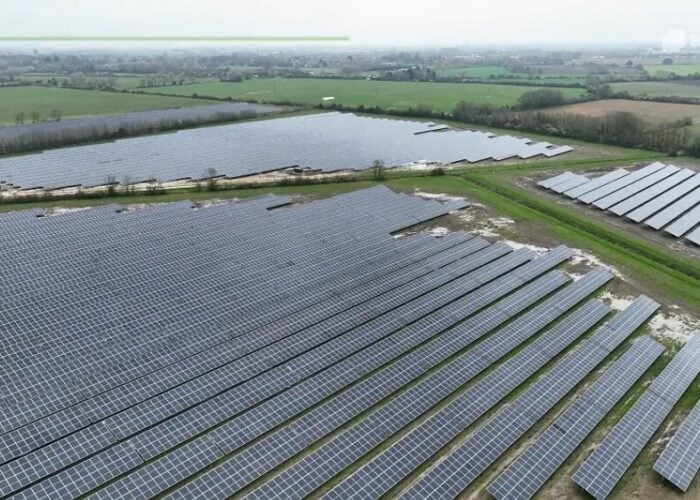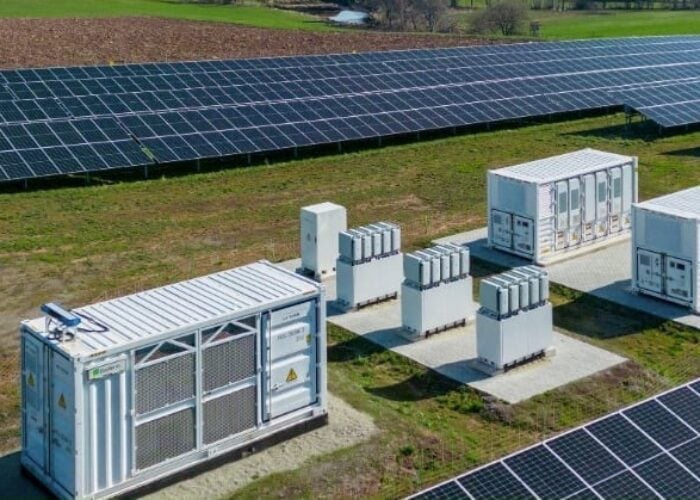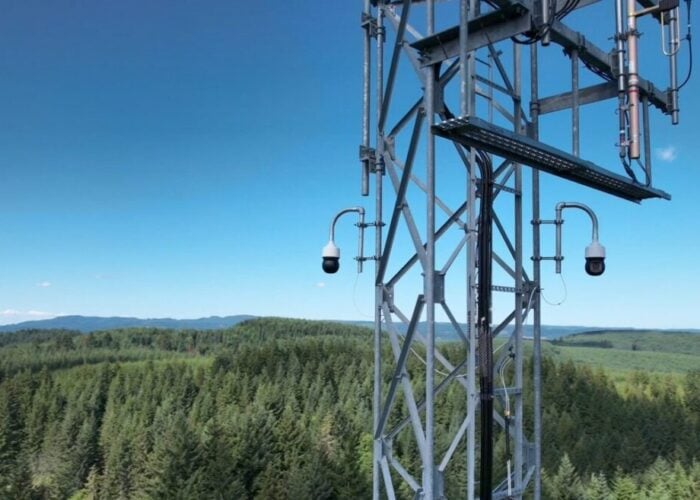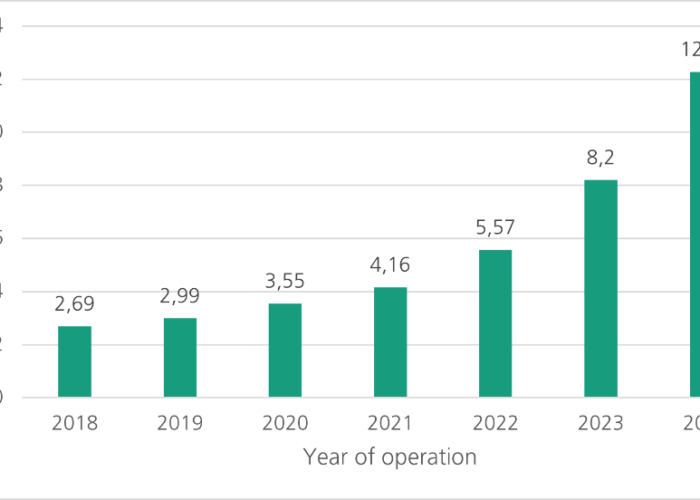A week after German utility giant E.ON announced its withdrawal from fossil fuels and an exclusive focus on renewables, further evidence has emerged that utilities face growing disruption from distributed energy technologies.
According to a study published yesterday by management consultancy Accenture, the growth of technologies such as PV and storage will hit utility company revenues to the tune of US$130 billion a year within a decade.
Try Premium for just $1
- Full premium access for the first month at only $1
- Converts to an annual rate after 30 days unless cancelled
- Cancel anytime during the trial period
Premium Benefits
- Expert industry analysis and interviews
- Digital access to PV Tech Power journal
- Exclusive event discounts
Or get the full Premium subscription right away
Or continue reading this article for free
Accenture’s report, ‘Digitally Enabled Grid’, said that by 2025 the revenues of US utilities in the US could be down by as much as US$59 billion and those in Europe by US$75 billion as their business models face a growing squeeze from distributed technologies.
The study modelled three scenarios – “status quo”, “demand disruption” and “perfect storm” – to assess how technologies, such as PV, electricity storage, electrification of heating and transport, energy efficiency, energy conservation and demand response, would impact the grid network and utilities’ business models.
“Based on our research, Accenture believes that the most likely scenario in the next 10 years could lead to revenue losses at the lower end of our scale, US$18 billion a year in the US and €39 billion [US$48 billion] in Europe, caused by a moderate reduction in load on the grid network,” said Valentin de Miguel, global managing director of Accenture Smart Grid Services.
“This is because adoption of energy efficiency and distributed generation will become possible without subsidies, which will lead to greater market penetration as a result of shifting consumer sentiment, falling technology costs and a moderate rise in electricity prices, especially across Europe.”
But under the “perfect storm” situation, in which factors such as renewables subsidies continuing into the 2020s, technology costs plummeting and end users embrace distributed technologies conspire to create a worst-case scenario, utility losses could rise to as much as US$130 billion, Accenture said.
The report highlighted how quickly solar costs are falling to illustrate the challenges faced by utilities.
It said PV is already at grid parity in many states in the US and by next year will be at parity across Australia and most EU member states, except ones with poor solar resources, such as Sweden and Poland, and Spain, where there are regulatory barriers to solar PV deployment. It said Japan would reach parity in the next few years, followed by the rest of North America, excluding Canada and some US states with the lowest electricity prices.
And the study suggested that utility bosses are clearly beginning to see the writing on the wall.
In a survey of global utility executives by Accenture, 61% said they expect “significant” or “modest” revenue reductions as a result of distributed generation, such as PV, compared to 43% last year.
But the report plays down the likelihood of the much-vaunted “death spiral” facing utilities as customers use grid power just for backup, or abandon it altogether.
The majority – 79% – of utilities executives believe that it won’t be cost-effective for consumers to go off-grid without any subsidies until 2030 or beyond. In addition, by 2035, just 12% of customers in North America are expected to become energy self-sufficient, compared to 11% in Europe, the report said.
So does this mean a growing number of utilities are likely to follow the E.ON lead and abandon fossil fuels and the centralised power model? German utility, RWE, said immediately after the E.ON announcement that it had no plans to follow its compatriot’s lead.
But the number of utilities now embracing renewables is certainly growing, even if their sudden interest in technologies they had previously been trying at all costs to prevent taking root does raise questions over their motivations.
At the very least, it seems, a tipping point is approaching for utilities that will require them to take a very close look at how they do business in the future, even if that doesn’t mean a wholesale abandonment of fossil fuels, E.ON style.
As Accenture’s de Miguel concludes: “In order to navigate through this demand disruption, utilities will need to fundamentally transform their business models, including the creation of distribution system operations services to manage a more complex and distributed grid.
“As part of this transformation, they should focus on engaging with regulators to secure the long-term viability of the distribution business. This includes the adoption of new tariff structures, opening up new markets and aligning subsidies; investing in grid optimisation, such as automation, sensing devices and real-time analytics; and developing new customer products and services.”






